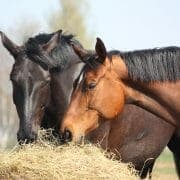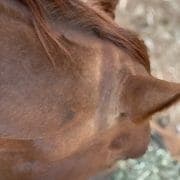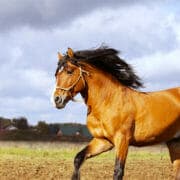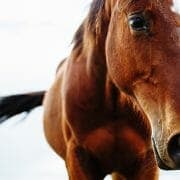Bodyweight Estimation: Which Method Is Best?
Horse bodyweight estimation—which method is best?
Having an accurate bodyweight, or at least an accurate bodyweight estimation, for your horse is critical when formulating your horse’s diet. Overestimating your horse’s bodyweight may mean you feed too much, resulting in weight gain and wasted money on feed that is surplus to your horse’s needs. Underestimating could result in underfeeding your horse, possibly causing weight loss and nutrient deficiencies.
How to do it … better!

Weighing your horse on a set of livestock scales is by far the most accurate method of obtaining your horse’s bodyweight. However, few of us have the luxury of a set of scales. Thus, we turn to various methods that allow us to estimate our horse’s bodyweight. There are 3 generally well accepted methods for estimating your horse’s bodyweight:
-
- Weight tapes – you place a specially marked tape around your horse’s girth and it gives you an estimated weight.
- Height and Condition score – using your horse’s height and body condition score and a published weight table, you can look up your horse’s estimated weight.
- Girth and Length measurements – measure your horse’s girth and length from point of the shoulder to point of the buttock and then enter them into the equation:
kg of bodyweight = [ girth (cm)2 x length (cm) ] ÷ 11,880
But how accurate are these methods?
We ran a very small test on the accuracy of the 3 methods and compared them against actual bodyweights of horses. Our results showed the following:
| Method of Weight Estimation | ||||
|---|---|---|---|---|
| Horse | Actual Bodyweight | Weight Tape | Height / Condition Score | Girth and Length |
| Poet | 475 kg | 500 kg | 490 kg | 468 kg |
| Quilla | 444 kg | 500 kg | 463 kg | 446 kg |
| Cass | 430 kg | 460 kg | 437 kg | 422 kg |
The weight tape was the least accurate method, overestimating the weight of these horses by an average of 8.3% (meaning all nutrient requirements will also be overestimated by 8.3%). The Height/Condition Score method was a bit better, only overestimating the weight by 3%. The Girth and Length method is the best, underestimating the body weights by an average of 1%.
Take home message…
An accurate bodyweight is essential if you want to balance your horse’s diet correctly. Be very careful when estimating your horse’s bodyweight. If you cannot weigh your horse on livestock scales we recommend you use the Girth and Length method to estimate your horse’s bodyweight as it will give you the closest estimate to your horse’s actual bodyweight.
Join FeedXL today and take control of your horse’s nutrition
Get EVEN MORE practical and personalised feeding guidance when you sign up to FEEDXL.
Do you have a question or comment? Do you need help with feeding?
We would love to welcome you to our FeedXL Horse Nutrition Facebook Group. Ask questions and have them answered by PhD and Masters qualified equine nutritionists and spend time with like-minded horse owners. It’s free!
Click here to join the FeedXL Horse Nutrition Facebook Group









